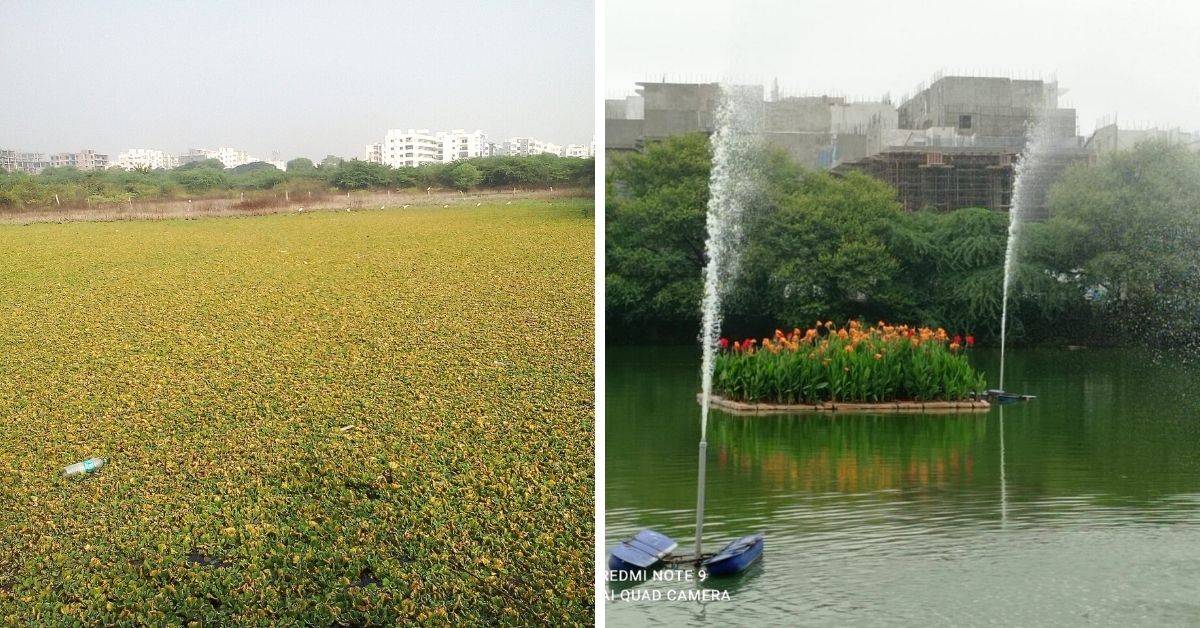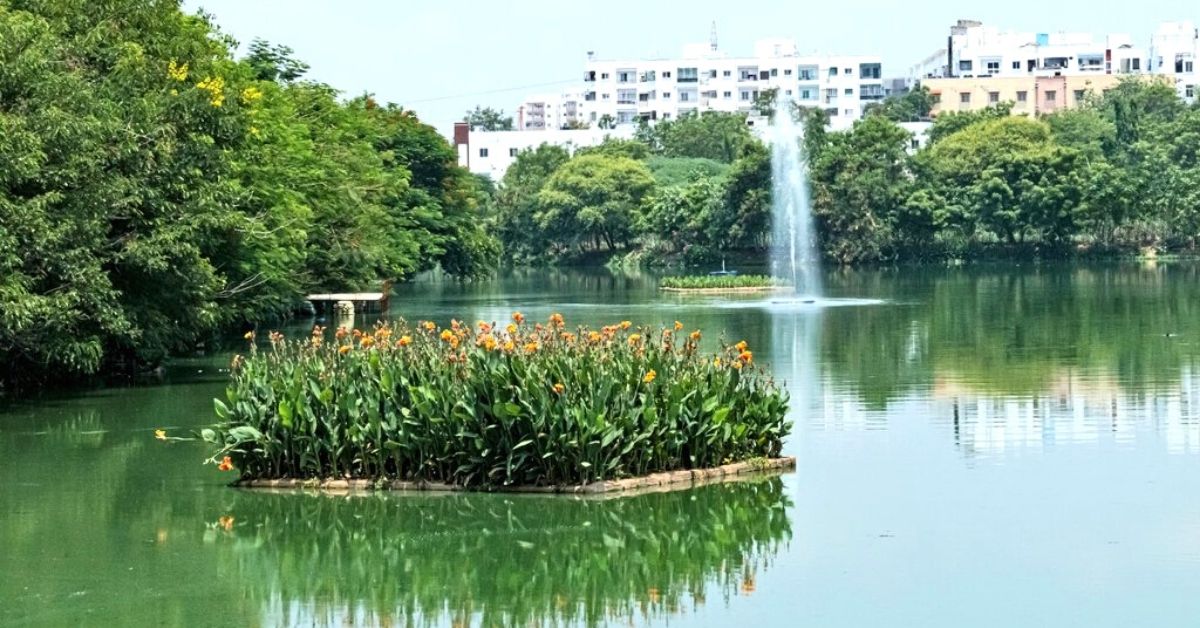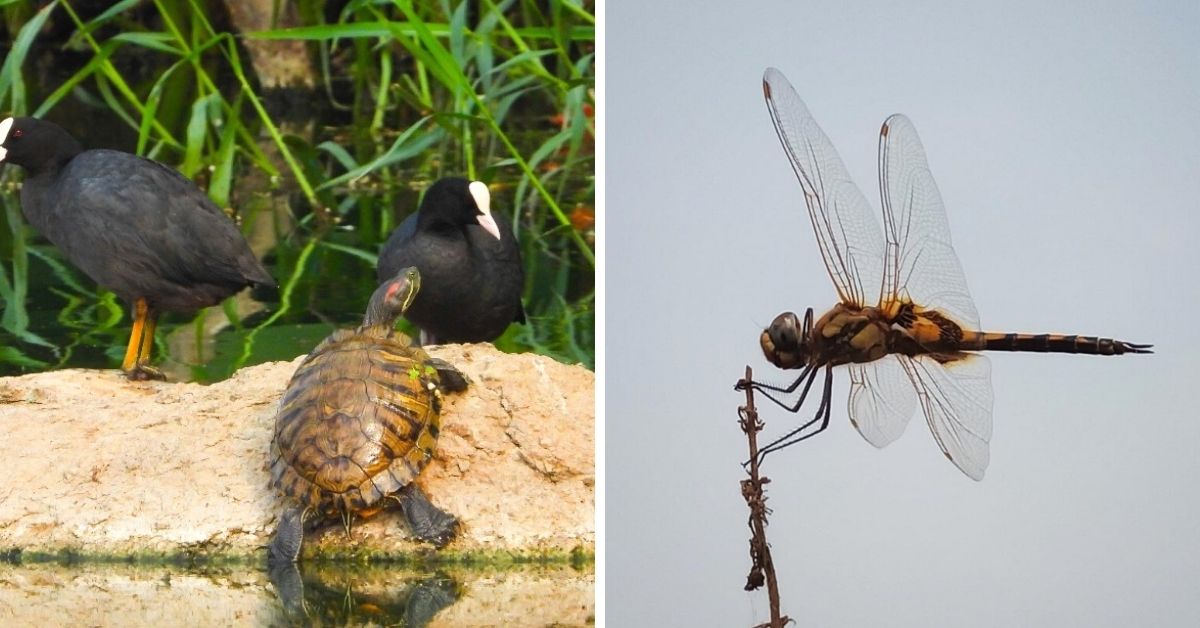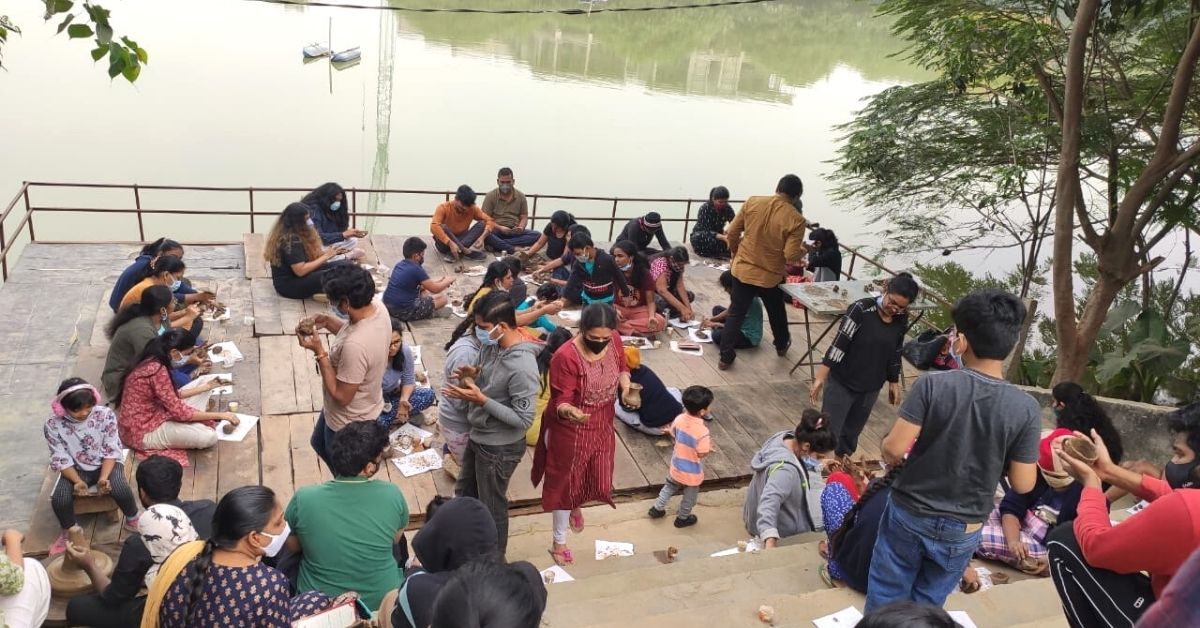Despite Threats, Here’s How I Converted This Dump Yard Into a Beautiful Oasis’
Madhulika Choudhary, through her NGO Dhruvansh, restored the choking Ibrahim Cheruvu wetland in Hyderabad to its days of glory

Ibrahim Cheruvu lake, located in the heart of Hyderabad, is a serene, calm and peaceful wetland with several species of flora and fauna thriving in the water body. One could spend hours admiring its beauty and taking some time off from the hectic urban lifestyle on this biodiversity spot.
As serene as this may be to imagine, if you live around a water body you may notice floating bottles of beer, shampoo, discarded items like mattresses or even water hyacinths. The thought of sitting near such a water body may be revolting because of its odour and the pollutants.
Until 2018, the historic 450-year-old lake spread across 108 acres was no different than most of the water bodies located in urban ecosystems — dump yards. From afar it may look as though the lake is being taken over by a carpet of the water hyacinth.
However, in 2016, a floating dead body on the lake witnessed by Madhulika Choudhary, a city resident, triggered a movement to turn the tide around, thus changing its fate for good.
A series of interventions and natural remedies initiated by her have helped the lake transform from a dump yard into a healthy living ecosystem.
A 360-Degree Transformation

History suggests that Ibrahim Qutb Shah Wali, the fourth Sultan of the Qutub Shahi dynasty, also the architect of the famous Hussain Sagar lake built the Ibrahim Cheruvu. It was named Ibrahim Cheruvu as the water from the lake ensured that the royal garden, Ibrahim Bagh, flourished through the year.
Madhulika always walked past the lake during her free time. A native of Pilani in Rajasthan, the 38-year-old qualified as a scientist, environmental manager and worked as a professor at ICFAI and Sharda University. She then moved to Singapore with her husband and returned to Hyderabad in 2014.
The same year, she conceived an NGO, Dhruvansh, that worked for the cause of the environment spreading awareness about climate change, waste management, renewable energy resources and more. “The incident made me feel terrible about the deteriorating condition of the lake. I began conducting cleanliness drives around the lake and fought with authorities against illegal encroachments,” she tells The Better India.
Madhulika continued her attempts week after week. A few volunteers joined her cause. But every weekend, all her hard work was futile as locals kept littering. “I realised that the lake required much more than a weekly cleanliness drive,” she says.
In 2018, she decided to use her knowledge to bring biological interventions for the water body. She released a 3,000 square feet long Floating Treatment Wetland (FTW). It is a soilless hydroponics technique, and the structure involves four layers made from floatable bamboo forms, composed of gunny bags and gravel. The floating entity is arranged over a styrofoam cubicle allowing it to float.
The plants mounted on the structure extract nutrition from its roots have an open end at the bottom, allowing them to access water. With water, soil and sunlight, the FTW becomes a self-sustained entity enabling plants to thrive.
Initially, the NGO installed a single floating wetland that hosted 3,500 plants. It contained various species like ashwagandha, fountain grass, citronella, bulrush, hibiscus, cattails and flowering herbs.
Madhulika says the plant selection was precise, aiming to clean the organic contaminants in water and repel mosquitoes.
The second FTW was floated in 2020, increasing the number of plants to 7,000 in a 6,000 square feet area.
Madhulika says that lakes in Hyderabad mainly receive domestic sewage and can easily be treated by such biological treatment systems. “The microorganisms at the plant root systems break down the organic matter and assimilate in the form of nutrition by microbial decomposition method. The root systems thus clean the organic sediments and pollutants. Besides adding aesthetic value to the lake, it also encourages biodiversity growth,” she says.
The lake also has seven floating aerators of two horsepower each, installed the same year. They pump oxygen into the water body to increase its dissolved oxygen levels. The time duration to operate the system varies according to the changing requirements of the water body and seasonal temperature variations.

Madhulika says about 1 lakh plant species like banana, neem, giloy, Singapore cherry, tulsi, ginger, vetivers, lemongrass, peepal, jamun, mango, and others surround the lake. A leaf and litter composting unit decomposes the organic waste into manure for the plants.
“The FTWs helped to control weeds, and the aerators improved odour. The tree plantation acted as a natural wall, thus preventing debris dumping and keeping encroachments at bay,” she says.
Such remedies have helped the lake remain weed-free for the past couple of years.
Today, the lake is home to more than 225 bird species, 15 reptile varieties, 300 types of insects and more. “Turtles, peahens, and mongooses are a common sight at the lake. Moreover, the lake hosts rare species like Eurasian Wryneck birds, civet cats, monitor lizards, rock pythons, dragonflies and butterflies.
Besides, the fish population in the lake is thriving because of the favourable conditions created to improve its ecology. The restoration work has earned three national and state awards each for conservation.
Madhulika says that the government had estimated the lake restoration at Rs 22 crores. “But 5,000 volunteers from 110 schools, 40 colleges, and compassionate citizens receiving financial support through CSR [corporate social responsibility] projects and government funds helped restore the lake in just Rs 21 lakhs,” she adds.
Moreover, the success has enabled the NGO to introduce the FTWs in other city lakes like Chandana Cheruvu, Jaanamma Cheruvu, Chintal Cheruvu, Sunnam Kunta, Durgam Cheruvu, Khajaguda lake, Gurunath Cheruvu and Hafeezpet lake.
Citizen Support – A must
But success has not come easy, and Madhulika continues to face multiple challenges to date. “From 2016-2017, I did not have any volunteers and did all the cleaning work with my young kids. In the beginning, I had to find solutions to the problems myself,” she adds.
The conservationist says the lake continues struggling with encroachment issues and volunteers have to keep a constant vigil for the same. Madhulika has faced multiple threats from various levels. “I even had to change my house as the threats became unbearable. The land sharks do not like nature conservators like us,” she says.
Today, she has support from various strata of society and feels confident to face challenges, she says, adding that the local body and the government departments have also come up in support of her.
Today, the lake is in a much cleaner and healthier state, but it continues facing threats from incidents of rubbish throwing or uprooting of plantations.
“The other major challenge is to change the mindset of the locals. Many irresponsible residents dump waste in the water bodies because of their disconnect with nature. Time has come to reconnect those bonds and ensure that citizens participate in the nature conservation process,” she says.
Citing an example, she adds, “Occasionally, citizens come to celebrate birthday parties but throw cake boxes in the lake. Such instances are disheartening.”

To change the mindset of locals, Madhulika has found unique ways. “Conducting an hour-long lecture on lake conservation can exhaust listeners. But a pottery event that involves handling soil and discussion on soil health and conservation becomes an interesting prospect. I conduct such events that revolve around sustainable clothing, lifestyle, making of environment-friendly cleaning products for domestic purposes and workshops around sustainability,” she shares.
So far, the NGO has organised over 1,000 awareness programmes on nature conservation that also include plantation drives, nature walks, native fish conservation, pollution prevention, solid waste management, among others.
Madhulika plans to develop the lake as an environment incubation centre, enabling students and researchers to learn about wetland conservation.
The initiatives are already showing slight results.
Citing an incident, Madhulika says, “Recently, we organised an event requesting volunteers to create 2,000 litres of bio-enzyme, made from fermented fruit peels and vegetables. The aim was to release it in the lake to add good bacteria and probiotics. The volunteers spent weeks creating the liquid. About 1,500 litres was introduced into the lake, which helped bring the pollutants down. These bio enzymes can also get used as cleaning agents. I term it as a step towards sustainability,” she says.
Madhulika strongly believes that success in nature conservation or restoration can come by shifting community mindset and involvement. “The reality is tough, but lake restoration or revival is ultimately dependent on the community’s willingness,” she says.
Edited by Yoshita Rao
If you found our stories insightful, informative, or even just enjoyable, we invite you to consider making a voluntary payment to support the work we do at The Better India. Your contribution helps us continue producing quality content that educates, inspires, and drives positive change.
Choose one of the payment options below for your contribution-
By paying for the stories you value, you directly contribute to sustaining our efforts focused on making a difference in the world. Together, let’s ensure that impactful stories continue to be told and shared, enriching lives and communities alike.
Thank you for your support. Here are some frequently asked questions you might find helpful to know why you are contributing?


This story made me
-
97
-
121
-
89
-
167













